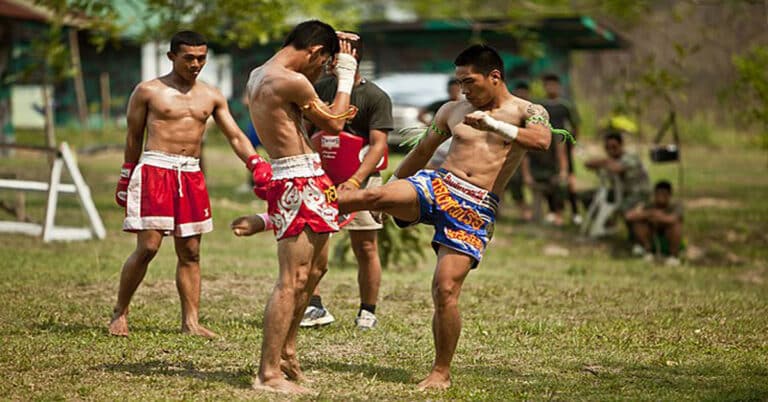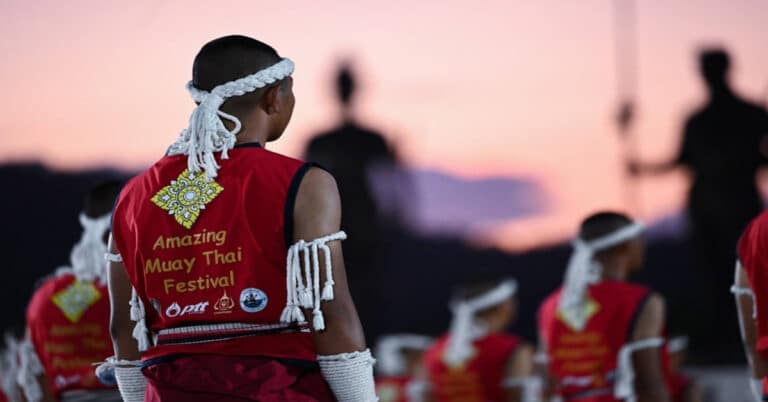Muay Boran – Ancient Thai Boxing
Before the sport of Muay Thai that we see across the world today, before well-known sports brands like Fairtex and Yokkao rose to prominence, before the great champions of Saenchai P.K. Saenchai, Nokweed Davy and Namsaknoi Yudthagarngamtorn there was Muay Boran.
Muay Boran which translates to “ancient boxing” is a broad defining term used to describe the martial arts of Thailand and is considered to be the precursor to modern-day Muay Thai and it has been a crucial part of Thai culture for generations. Muay Boran is a full-contact combat sport that involves a combination of strikes, clinching, and grappling techniques and was commonly practiced before the rules overhaul in the 1930s, which came about as a direct result of the tragic fight between Phae Lieng Prasert and a famous Cambodian Khmer boxer, which ended in the death of one of the fighters.
Prior to these changes, Muay Boran was primarily performed in rural areas and was seen as a violent and dangerous form of combat. In order to increase its popularity, attract more spectators while reducing the risks seen in the aforementioned fatal bout, the sport’s governing body decided to implement several rule changes that would make it safer and more accessible to the general public. These rules saw the introduction of boxing gloves which saw a sharp decrease in cuts an injuries during competitive bouts and the development of the rule set still in use today.
In addition to these changes, a scoring system was introduced to be more objective and standardized, with judges scoring rounds based on criteria such as strikes landed, effective clinch work, and overall ring dominance. These changes created the sport of Muay Thai and helped to make it a more professionally recognized and organized sport
The 1930s rule changes saw the rise of Muay Thai and is generally seen as a turning point in the sport’s history, helping to establish it as a respected and regulated form of combat, and laying the foundation for its continued growth and success in the decades to come.
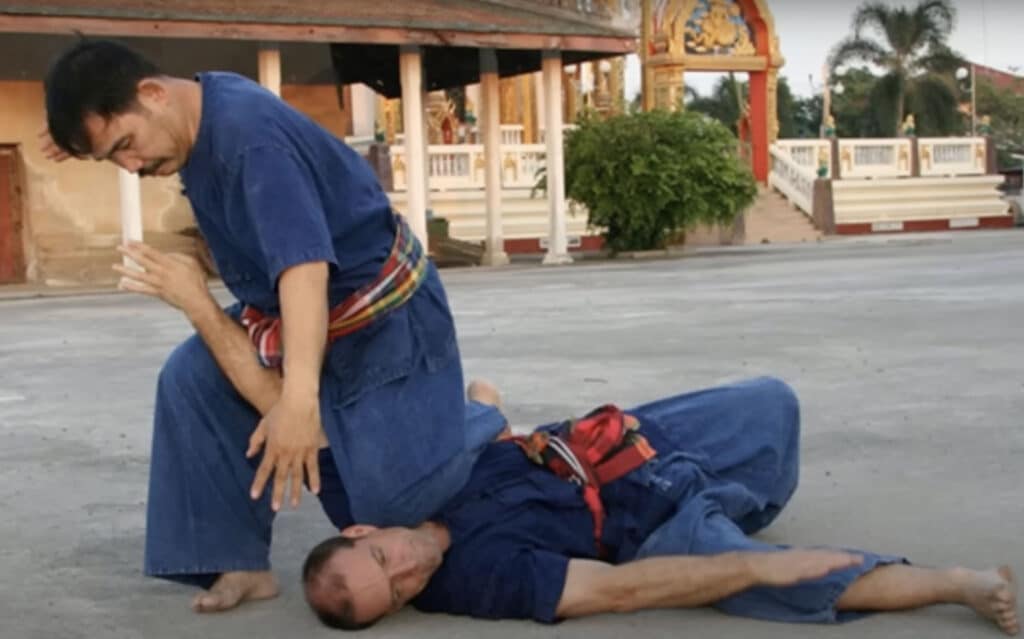
What is Muay Boran?
To followers and participants of martial arts. Thailand and Muay Thai cultures are heavily intertwined. Muay Thai enthusiasts who go a little further and look into the history of the sport will discover a martial art that shares many similarities with Muay Thai while having many branching points that differ from the popular sport of modern Thailand.
There’s a strong possibility that if you watch Muay Thai, you’ve at least heard of the name “Muay Boran”, which is used to refer to all of the antiquated unarmed and fighting methods that the Thai people invented As well as a system of combat using a number of traditional Thai weapons. It refers to the methods used before they were refined and structured into the contemporary Muay Thai fighting sport.
Muay Boran has its roots in ancient Thai warfare and has been used by soldiers in hand-to-hand combat situations for generations. The sport evolved over time and became popular as a form of entertainment in which soldiers and civilians would compete against each other in order to determine the strongest and most skilled fighters.
The sport was also used as a form of physical and mental conditioning for soldiers; seen as a way to increase their strength, agility, and combat skills through rigorous preparation. Historically Muay Boran was also used for personal protection and for settling disputes between individuals. It gradually became a highly respected martial art and is often associated with bravery and honor. The techniques used in Muay Boran were highly effective, and the style quickly gained popularity throughout Thailand.
Other Southeast Asian martial arts such as Lethwei the national martial art of Myanmar share numerous similarities to Muay Boran particularly the roped hands and the ability to employ not only the elbows, knees, kicks, and punches of the Muay Thai fighter but headbutt strikes too
The art of Muay Boran and its practitioners do not wear any form of padded gloves. Instead, practitioners encircle their hands with hemp ropes known as Kard Chuek an often blessed material made from hemp ropes and in more recent times rattan and cloth.
Muay Boran as it is currently practiced has a few more restrictions than it did in the past. As the sport has moved on from the violent competitions, it is now mostly practiced for performance and entertainment, much like other ancient martial arts like Chinese Kung Fu and Karate. A great example of this is the touted champion of Muay Thai Buakaw Banchamek who often displays graceful demonstrations of Muay Boran paying homage to his beloved sports history and Thai culture.
The Birth of Muay Boran
There is no concrete proof identifying a single origin of Muay Boran, however many agree that The origins of the art of Muay Boran can be traced back to the Sukhothai Kingdom in the 13th century, During this time, the Kingdom of Sukhothai was at war with neighboring kingdoms and needed a form of combat that would give its soldiers an advantage in battle. The soldiers of Sukhothai were trained in a close-quarters combat style that utilized all eight limbs; the hands, feet, elbows, and knees as weapons this became known as Muay Boran. This gave the soldiers an edge over their opponents, who were often only trained in simple hand-to-hand combat techniques
Unfortunately, the Burmese-Siamese war that raged between 1765 and 1767 has caused much of the recorded history of Muay Boran to be lost, however during this time of conflict rose the famed “father of Muay Thai” Nai Khanom Tom.
The Burmese king in 1774, known to the Thai people as King Mangra held a competition of conflicting styles, pitting Thai boxers against his best Lethwei fighters. During the competition following the fall of Ayutthaya (the Thai capital at the time) Nai Khanom Tom. Is said to have defeated no less than 10 Lethwei fighters in succession. This act of immense skill and bravery supposedly prompted the Burmese King to declare “Every portion of the Thai is blessed with venom. He can dispatch thirty opponents even with just his hands and allow Nai Khanom Tom to return to Thailand a free man to teach Muay Boran.
As the art of Muay Boran became more widespread arguably because of the influence of the great Nai Khanom Tom, it quickly evolved to include a wider range of techniques and weapons, progressing to improving the combat ability of it’s practioners use of sticks, swords, and other weapons, these were all incorporated into the martial art and it’s training and practice.
Muay Boran rapidly became a popular spectator sport across Thailand, with matches being held in front of large crowds which helped give birth to the highly touted stadium fights that are still very much present today in modern Thailand. These matches all of which focussed on the unarmed aspects of the martial art were often accompanied by what is now considered ”traditional” music, and the fighters would perform their “Wai Kru” and “Ram Muay” before the match began to pay homage to their trainers and gym, a tradition that is present in today’s Muay Thai boxing.
In the late 19th century, Muay Thai was formalized as a sport and became regulated by the government of Thailand. This led to the creation of standardized rules and regulations, which helped to further refine the techniques and strategies used in the sport. Muay Thai also became more organized, with the creation of professional fight gyms and the establishment of regional and national tournaments.
Following this at the turn of the 20th century, the King of Thailand King Rama V tried to outline the bases of the art of Muay Boran declaring masters of each style including Muay Lopburi, Muay Korat, and Muay Chaiya, who represented the central, northeastern, and southern provinces, respectively. Later, after further distillation of the sport saw other styles emerge like the Muay Tha Sao from the north.
One of the most significant changes that took place during the early 20th century was the introduction of gloves and other protective gear as well as a set of standardised rules which outlawed of some Muay Boran’s techniques with the aim of reducing the risks of injury and or death, these changes as well as the obsolescence of a number of techniques caused by the increased protective equipment allowed for a safer and more controlled environment for the fighters, which proved to further popularize the sport, this saw the shift towards Muay Thai as we know it today which is considered one of the most effective striking martial arts in the world.
As a sport, it continued to grow in popularity and is enjoyed by millions of people around the world and is a key staple in a number of combat sports with it’s rich history and tradition closely tied to the culture of Thailand. Despite its evolution into a modern sport, the principles and techniques of Muay Boran are still evident in the sport of Muay Thai, and many of the traditional training, rituals and practices.
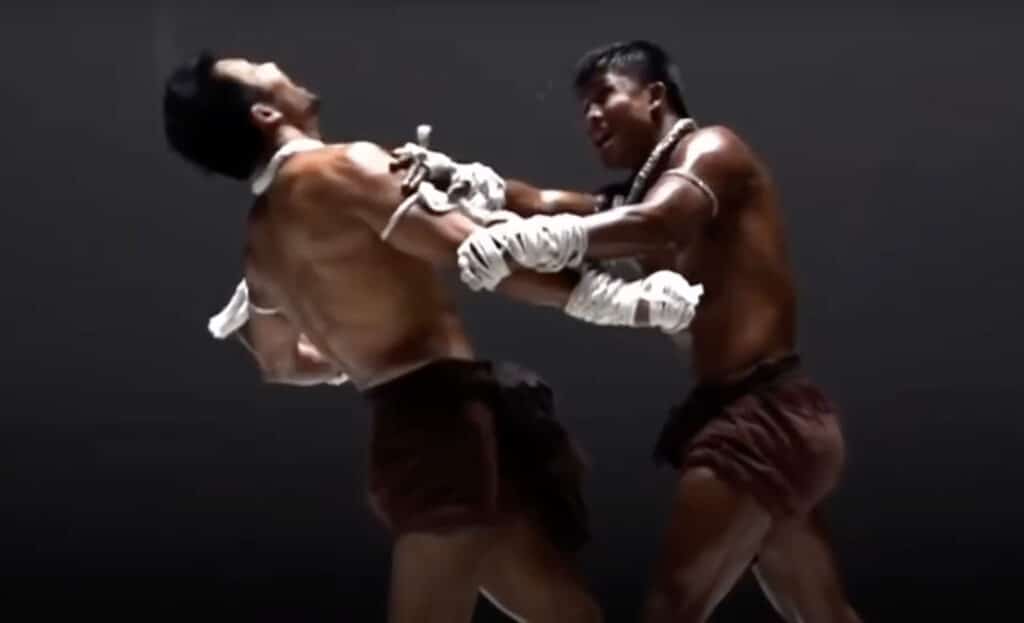
Muay Boran and Muay Thai
The common train of thought is that Muay Thai evolved through the practical use of many Muay Boran techniques under the modern rule set outline by the kings declaration in the 1930s
Muay Boran and Muay Thai are both full-contact martial arts and are in many ways similar; they both emphasize heavily on striking techniques punctuated with standing grappling, and clinching. Both styles use similar types of strikes, including punches, kicks, elbows, and knee strikes. The goal of Muay Boran is to use strikes to defeat their opponent by knockout or via submission (failure to continue) however Muay Thai introduced the modern idea of a points system and decision victories.
The main difference between the two is that Muay Boran is considered more traditional and incorporates a wider range of techniques which include but not exclusively the use of weapons from stick to swords, while Muay Thai is considered more modern and places a greater emphasis on strikes.
The fundamentals of the two styles share a number of similarities both in it’s presentation and application:
- Both Muay Boran and Muay Thai have similar training principles with a strong emphasis on physical conditioning and use Muay Thai shadow boxing, heavy bag work, and clinching drills to better their technical abilities.
- Fighters Perform a pre-fight Wai-Kru and Ram Muay to honour their coaches and bless the ring.g
- They both share similar striking patterns from traditional boxing combinations such as the jab, and a cross hook to the usage of the various kicks such as the roundhouse kick, Thai push kick as well as knee and elbow strikes. With an emphasis placed on the use of all “eight limbs” in both offensive and defensive techniques
- Both styles engage in the liberal use if the Thai clinch to ensnare their opponent to deliver close-ranged strikes.
- Both employ sweeps and counters to send their opponents to the ground to demoralise, tire and, in Muay Thai score significant points.
Although the two martial arts have a range of similarities at the core of many of their techniques Muay Boran also uses the head as a weapon. With the roots of Muay Boran being firmly embedded in its practical use on the battlefield and not the ring. This distinction in origin and perceived usage means that the application of Muay Boran comes with fewer rules allowing fighters to headbutt, strike the groin, throat, and other otherwise off-limits areas in the Muay Thai rule set. Besides this the styles differ in a number of ways:
- Muay Boran employs a wider stance with a lower center of gravity. This lower stance is in part used as a defense for the groin area.
- Muay Thai fighters use a looser defensive stance than Muay Boran with their fists on either side of the head often outstretched in a longer guard this is in part due to the padded gloves having an increased surface area allowing for a more liberal guard.
- This tighter style of Muay Boran allows the combatants to deflect strikes from the opponent much quicker, presenting fewer gaps in the guard and allowing the fighter to turn their defense into an opportunity to engage in the clinch and other grappling techniques..
- While Muay Thai focuses on high-scoring strikes to the body and head, Muay Boran aims to debilitate their opponent by focusing attacks to the limbs.
- Muay Boran favors more spectacular strikes such as flying knees mounted elbows meant to devastate their opponent with their techniques deploying wider swings to increase power. Although in modern Muay Thai this would be an inefficient use of energy in a timed bout the aim of Muay Boran is to defeat the opposition as quickly as possible thus the feeling out process of conventional Muay Thai is far less prominent.
- The training and theoretical use of weapons in Muay Boran, branches sharply from the unified rule set of Muay Thai and practitioners are trained in the use of weapons such as swords, staffs, and knives. The weapons techniques are often used to complement the hand-to-hand aspects of the martial art and aim to provide a strategic advantage in wartime combat with practitioners not only taught how to use the weapons but how to disarm their opponent and use the opponent’s weapon against them.. Each weapon deploys specific techniques and movements that are unique to that weapon within Muay Boran.
- Muay Thai has evolved into a sport, with a focus on competition with a focus on specific rules with a complex regional, national and global ranking system, while Muay Boran is still very much primarily practised for self-defence and as a means of preserving Thai cultural heritage.
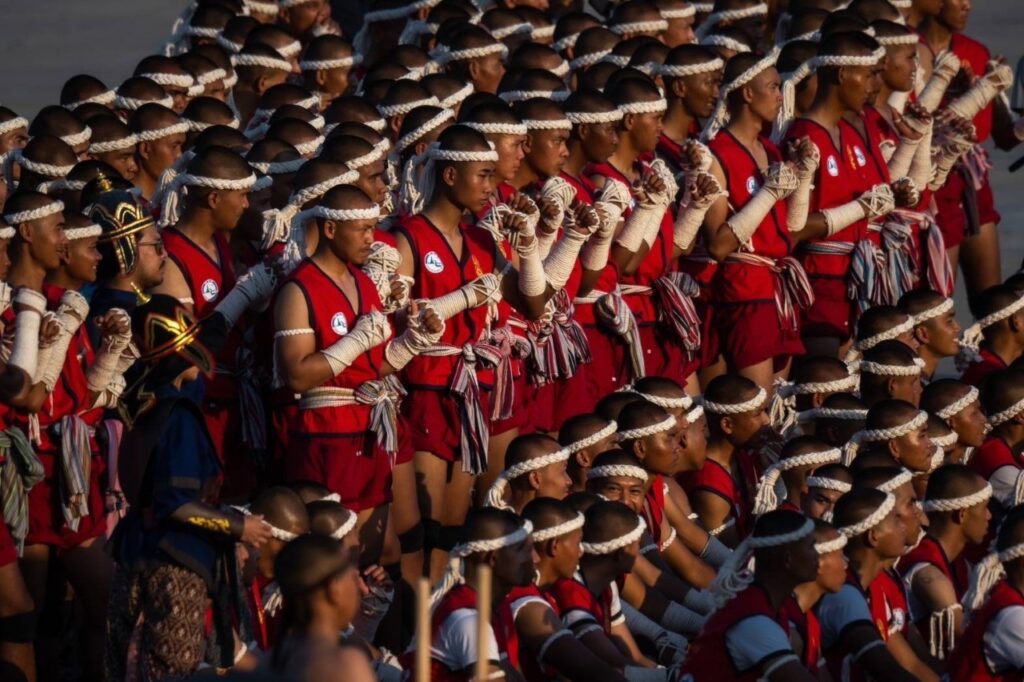
Besides the “father of Muay Thai” Nai Khanomtom, historical Muay Boran practitioners who are worth consideration and reverence for their stalwart devotion to the development of the ancient martial art are:
Pra Chao Sua, known in Thailand as the “Tiger King,” was a famous Muay Boran fighter who similarly lived during the late 1700s. He was known for his incredible strength and fighting skills and is considered to be one of the greatest Muay Boran practitioners of all time and Khun Phaen who was a legendary Muay Boran fighter and is considered to be one of the most skilled practitioners of the art. He was known for his incredible speed, agility, and power and was said to have been unbeatable in combat.
Both Muay Boran and Muay Thai are similar in many ways, including the nature of the sport and the techniques used The main difference between the two is that Muay Boran is considered more traditional and incorporates a wider range of techniques which include but not exclusively the use of weapons from stick to swords, while Muay Thai is considered more modern and places a greater emphasis on strikes.
Despite its prominence in the nation of Thailand’s past and prolific historical use, Muay Boran is still a relatively unknown sport around the world. In recent years, however, the sport has begun to find its feet in western society; slowly gaining popularity and recognition. There are now Muay Boran gyms and training facilities being established in multiple countries from the United States of America to The United Kingdom.
Unlike the past, Muay Boran is now being taught to people of all ages, genders, and skill levels, and the sport is now considered to be a valuable tool for personal development, physical fitness, and self-defense albeit not quite as famous as it’s successor Muay Thai.
In recent years Muay Thai is now seen televised across the world on marquee franchises like One Championship and watched with exalted reverence in the grand stadiums of Thailand however at its core it is still very much the modern adaptation of a martial art born of necessity on the battlefields of south east Asia.
Without Muay Boran and its rich history and cultural significance in Thailand, Muay Thai as we know it would not exist, from its borrowed strikes to it’s beautiful traditions both of which echo throughout Thai culture.
Muay Boran very much lives on through its spiritual successor; Muay Thai and has helped give birth to modern legends who forever follow in the footsteps of Nai Khanomtom the father of Muay Thai who still to this day is celebrated every year in Thailand with the “Wai Kru Muay Thai Day” festival in which Muay Thai fighters pay homage to their ancestors and offer blessings to their teachers.
Nai Khanomtom’s Muay Boran legacy however extends beyond the borders of Thailand, as his techniques and teachings have been adopted by martial artists all over the world. He is revered as a master of the art, and his legacy continues to inspire new generations of Muay Thai practitioners. The story of Nai Khanomtom serves as a testament to the power and beauty of the ancient martial art of Muay Boran, and his skill and bravery echo still to this day in the chorus of shins and elbows clashing against one another in the rings, stadiums and the sport that his legacy helped shape.


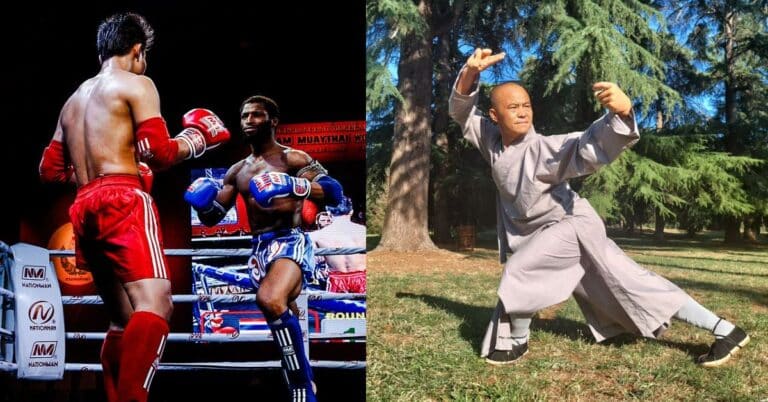
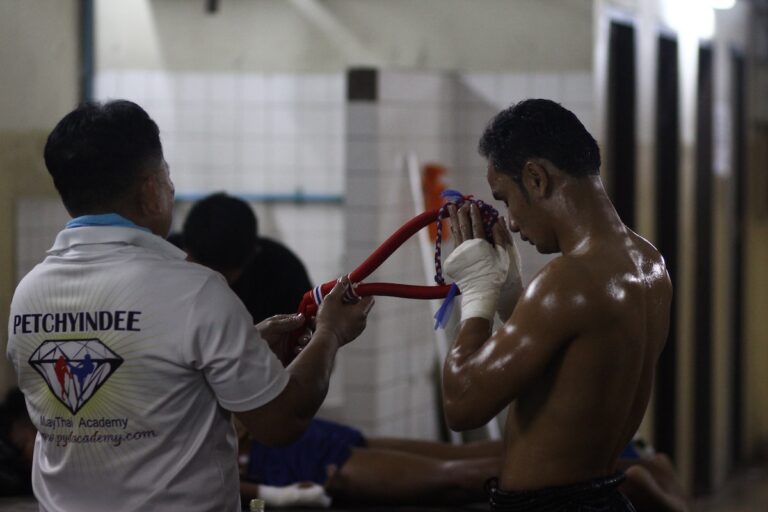
![Best Muay Thai Gyms in Bangkok [Updated 2024]](https://muaythai.com/wp-content/uploads/2023/11/Best-Muay-Thai-Gyms-in-Bangkok-768x402.jpg)

